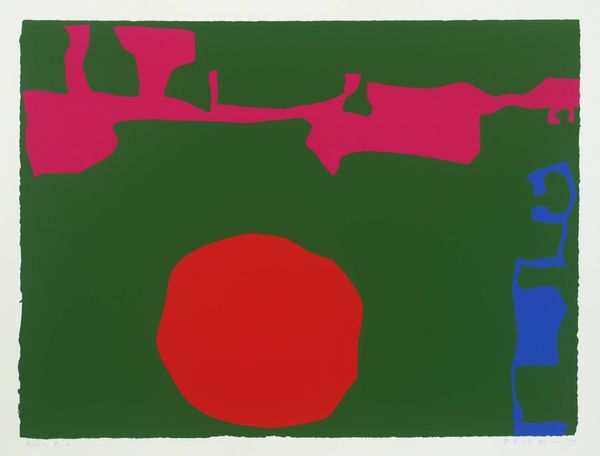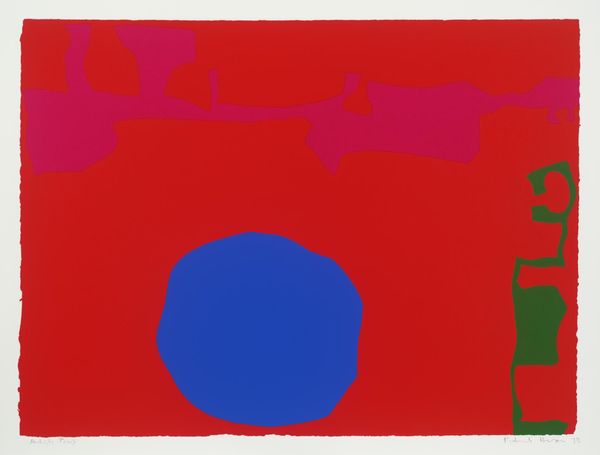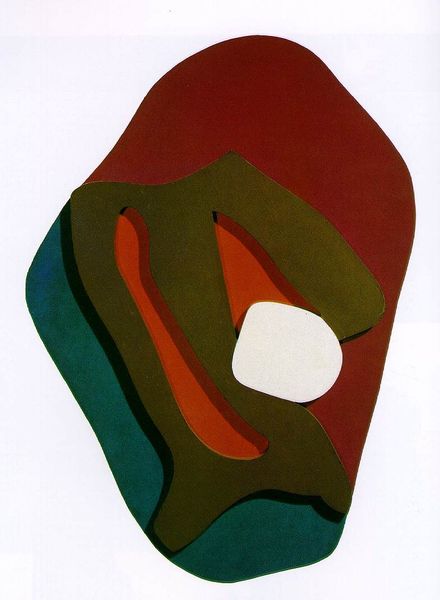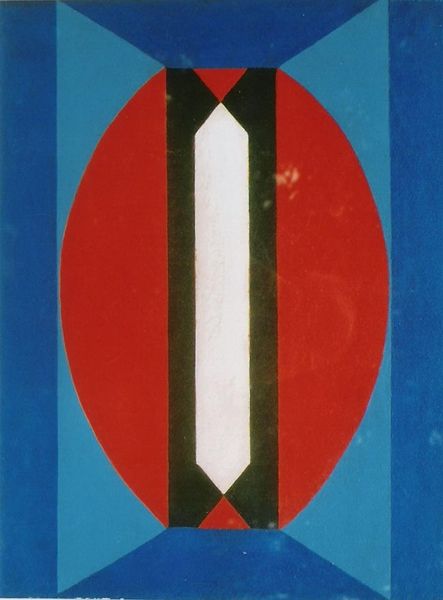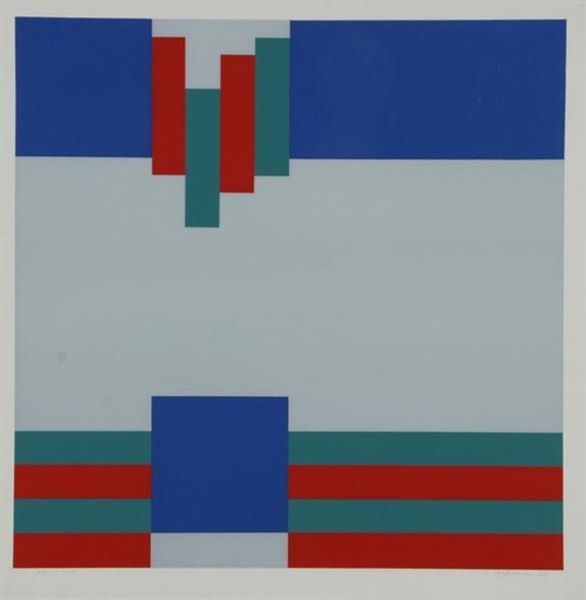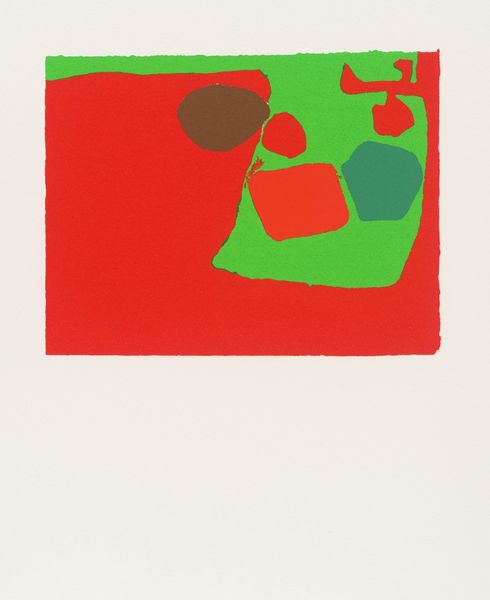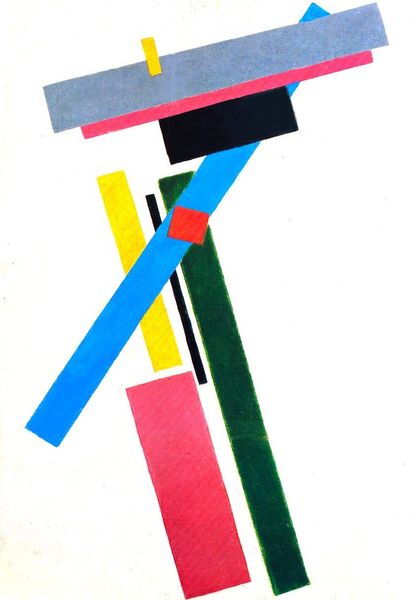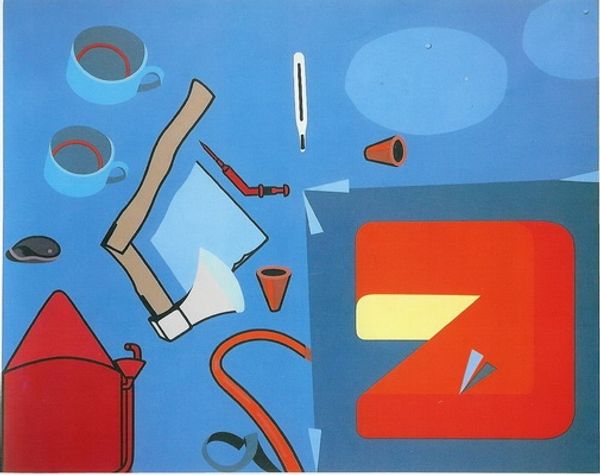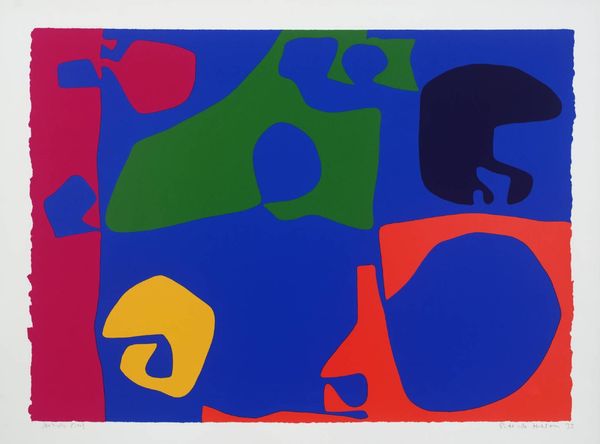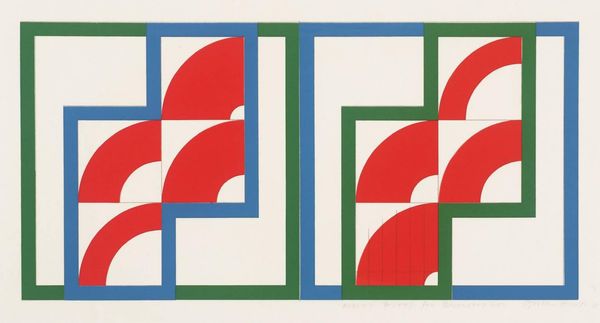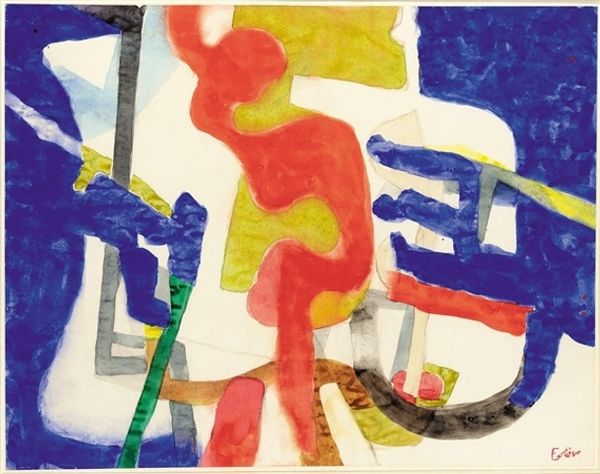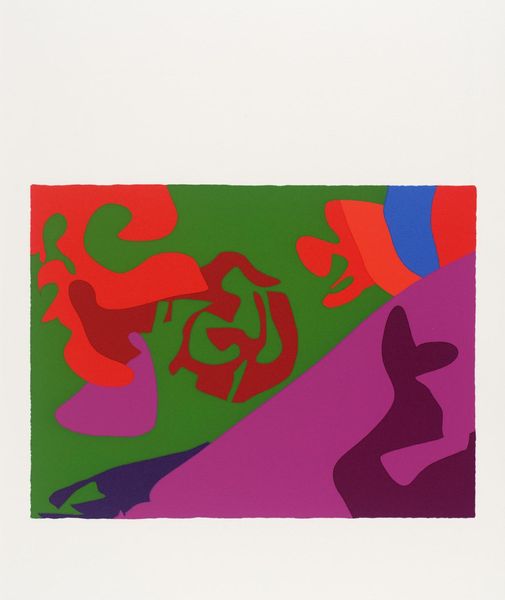
acrylic-paint
#
pop art
#
acrylic-paint
#
geometric-abstraction
#
abstraction
#
pop-art
#
modernism
Copyright: Julio Pomar,Fair Use
Curator: First impressions, here? Because honestly, I’m just sort of seeing building blocks. Editor: Well, hello there, fellow art enthusiasts. Today, we are looking at "Odalisca com Escrava II, segundo Ingres" by Julio Pomar. Created in 1969 using acrylic paint, it’s a striking example of Pomar’s ventures into geometric abstraction. Curator: Okay, yes. "Abstraction" makes much more sense. Before you told me that I was getting color-field vibes. So those aren’t haphazard rectangles and squares floating on that field of bright azure blue. It’s Ingres, you say? How cheeky. It sort of turns his orientalist fantasy inside out, making it flat and dimensionless and dare I say, a bit of a put-on. Editor: That’s precisely what gets me excited! The radical deconstruction, and really, democratizing of this classical image through very accessible and almost playfully naive geometric forms. The vibrant, synthetic polymer of acrylic frees it completely. This reproduction using Pop Art gives us pause to reconsider Ingres and the nature of labor. Curator: How so? Editor: The original painting is hyperrealistic with details that make one see hours upon hours of labor being poured into every nook and cranny of it. Every fold on a garment of the sitter and on the divan, jewelry and finery, and on the faces of his sitters. Ingres, the maker of his own art versus those, his sitter and slave in a hyperrealistic, luxurious moment is very class driven and labor obsessed. It smacks the viewer of commodity fetishism, that hides the labor process that made them. Pomar using modern material like fast-drying synthetic, challenges all of that. Curator: So you are implying that "material trumps meaning?" And that’s interesting! This is an engagement with production, I now see, in its essence: Ingres' detailed realism versus the immediacy and accessibility of acrylic and geometric abstraction. In other words, who gets to "paint what, how and for whom"? Editor: Exactly. And for me it is ultimately less about Ingres himself, and much more about this act of reclamation using Pop Art for art of the "people". Curator: Wow, that actually changed my reading entirely! It just shows that a piece can speak volumes depending on the context one chooses to adopt. And, the material it is made out of of course! Editor: It certainly does. Let us all celebrate the joy of interpreting works in art and re-reading all sort of symbols they are full of.
Comments
No comments
Be the first to comment and join the conversation on the ultimate creative platform.
